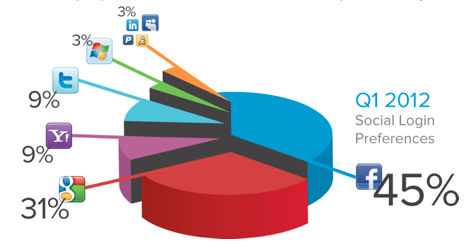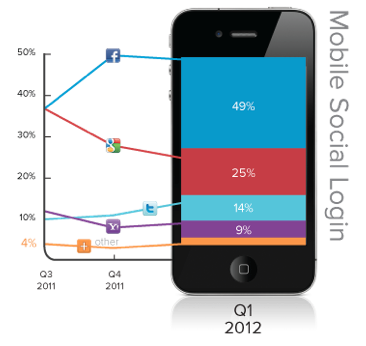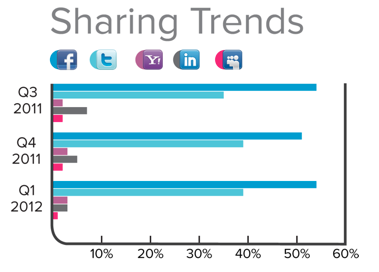
Logging in through the likes of Facebook, Twitter and Google may be the easiest way to connect to 3rd party sites across the Web. Sure, it means we’re forfeiting heaps of data, but that hasn’t stopped the trend from nearly killing the traditional login process in just a few years.
Following this trend, Janrain has released a study powered by its Engage tool, which analyzed some 365,000 sites. Overall, Janrain found that Facebook accounted for 45% of social logins, while Google came in at 31%. Yahoo and Twitter collectively hold an 18% share of social logins, while LinkedIn, Myspace and a number of other sites account for the remaining 3%.

Perhaps thanks to Google+, overall preference for Google has increased 2% since Q4 2011. As far as mobile apps go, Twitter has seen some strong growth, likely due to its iOS 5 integration.

As for actual sharing, Twitter continues to be the only network with a chance at fighting Facebook for the #1 spot. LinkedIn, Myspace and Yahoo follow, holding the #3, #4 and #5 spots respectively, far off in the distance.

Get the TNW newsletter
Get the most important tech news in your inbox each week.





